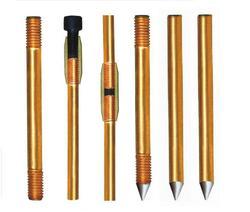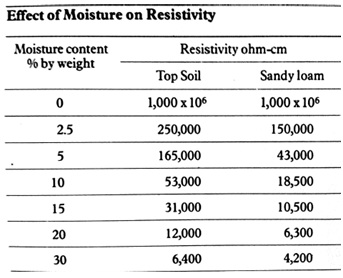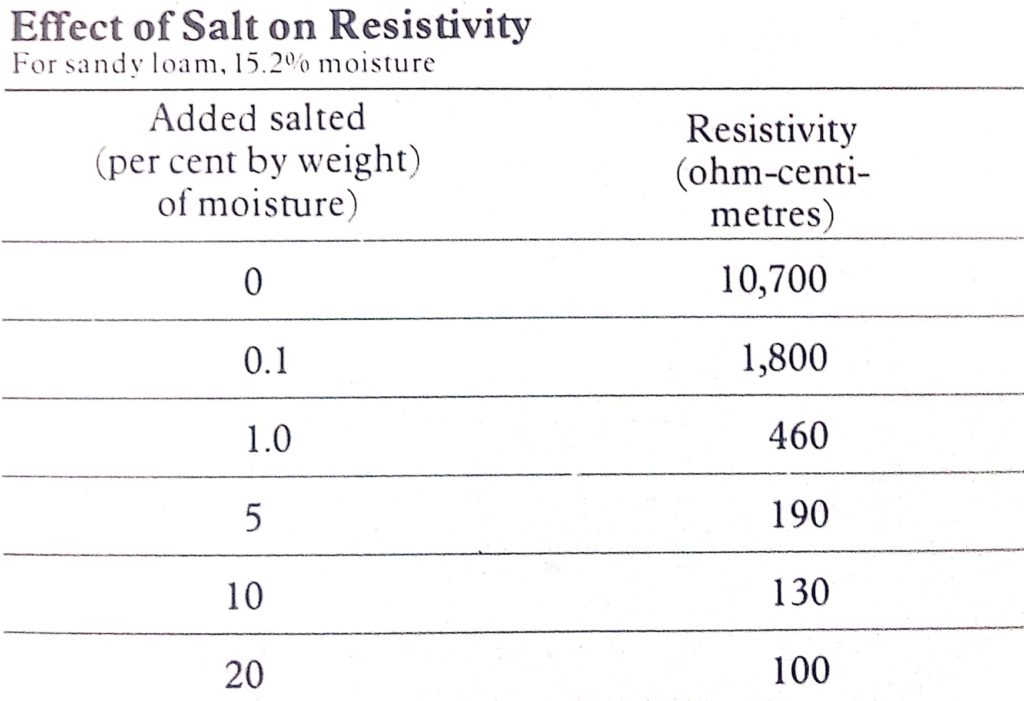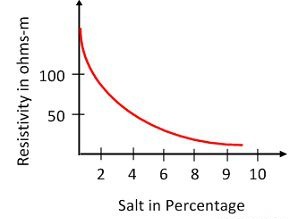Achieving a good earth mostly depend on the local soil conditions.

The electrical resistance of a conductor is its opposition to the passage of an electric current through it.
The resistance of a wire is directly proportional to its length and inversely proportional to its cross-sectional area:

The constant is called the resistivity and is a characteristic of the material. It’s unit is the Ωm. The conducting ability of a material is often indicated by its resistivity. The lower the resistivity, the better the conductivity.

A low soil resistivity () is the main aim and factors that affect resistivity are:
Moisture content of the soil
Below illustrate the effects of moisture on soil resistivity.


It is obvious from the above that the more the moisture content the less the soil resistivity.
Chemical composition of the soil eg. Salt content


Here, the more the salt composition, less the soil resistivity.
However, there is a caveat, the use of salt laden soil, is discouraged as bad practice by most international standard because of its corrosive nature and within a period of time it leaches away thus turning the soil to its original resistivity or more.
Temperature of the soil.


The more the temperature the less the resistivity.
Basic calculations for earth electrode systems

Once the soil resistivity has been measured from the local soil.
The appropriate earth electrode system can be chosen by using typical formulae listed below:
Horizontal Strips (Rectangular Section)



Doing the earth electrode calculations





Victor Oyedu, FNSE, FNIEEE, CPQ.
Power Quality and Energy Management Specialist.
Publisher at Afrienergyonline.com &
CEO, FullSpectrum Energy Solutions Limited, Nigeria
.







